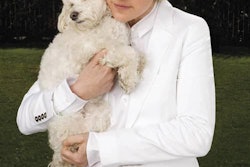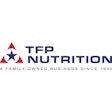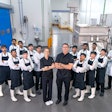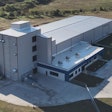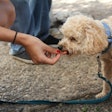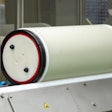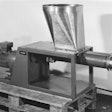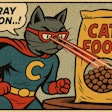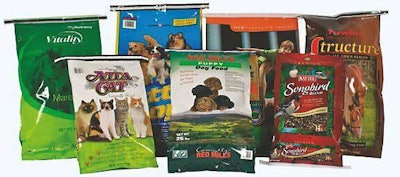
Looking for a more sustainable packaging solution? Perhaps you're searching for a way to speed up palletizing time while keeping costs low. Is predicting just how durable your packaging is your number one concern? Find solutions to these problems and more in the 2009 edition of ground-breaking packaging materials and equipment.
1. SuperTube woven polybags
Coating Excellence has recently launched SuperTube packaging: woven polybags that allow for superior graphic and printing capabilities (up to 10 different colors) with less than half the carbon footprint of paper bags. According to Coating Excellence, the bags weigh less, ensuring your shipping costs will be reduced. Also, polybags are preferred by most retailers. SuperTube bags reduce damage claims by 65-75% and provide a better moisture vapor transmission rate so your product stays dry. According to the company, SuperTube bags will not de-laminate with high-fat products, and based on testing, dogs prefer the taste of food from SuperTube bags over imported bags.
SuperTube woven polybags are versatile for the following reasons:
- Process printing up to 10 colors;
- Available in tubular (seamless) or back seam form;
- Available in white or clear;
- Many closure options;
- Variety of lamination options;
- Runs well on automated or manual equipment; and
- UV approved for 200+ hours.
SuperTube also has the benefit of being made in the US. This allows for reduced lead times, lower shipping costs, quality assurance and dependability for US-based petfood companies, according to Coating Excellence.
www.coating-excellence.com ; www.super-tube.com
2. Chlorine-free Eco-Tite shrink bags
Groundbreaking Eco-Tite bags contain no polyvinylidene chloride (PVdC) and use 25-33% less material yet deliver superior sealability, barrier, abrasion resistance and aesthetics, according to Bemis Packing and Curwood. These bags, developed for meat and cheese, would work well for fresh, pasteurized or raw petfoods and treats. Eco-Tite bags are ideal for most applications where traditional shrink bags are used.
Eco-Tite bags were first developed to meet the stringent need for chlorine-free packaging in Europe. PVdC, a common material used in barrier packaging, can contaminate recycling streams and release carcinogens when incinerated.
The multilayer Eco-Tite structure includes:
- A durable outer layer to resist puncture and abrasion;
- An EVOH layer for superior oxygen barrier without PVdC; and
- A high-flow sealant layer for excellent caulking and sealing under a wider range of sealing conditions.
Eco-Tite bags also feature excellent shrink for a tight fit with minimal dog ears, according to the company. The bags are also thinner and stronger than conventional bags, allowing significant downgauging. The downgauged material improves the product-to-package ratio so more bags fit in a carton and on a pallet, reducing warehousing and shipping costs.
3. State-of-the-art simulation software
The latest in realistic simulation software is enabling Silgan Containers to increase its speed-to-market and reduce tooling costs for many of its new metal can projects, according to the company. The software enables Silgan to predict "real-life" performance of its cans with a high degree of accuracy before a single container is manufactured.
"These software packages can model very thin material with a high degree of accuracy, which is key to predicting physical can performance," explains Alvin Widitora, director of new product development, Silgan Containers.
Silgan is using Abaqus Finite Element Analysis (FEA) software from SIMULIA, the Dassault Systèmes brand for realistic simulation, to evaluate the physical behavior of design concepts as well as project how the container will behave after it is filled with the product and then distributed. Each design is evaluated from a variety of mechanical performance aspects including axial load (stacking ability) and corresponding panel load (crush strength). As a result, Silgan is able to reduce as much as three to six months from the design phase and thousands of dollars in tooling costs.
"We have validated our modeling and simulation process up to a 97% level of accuracy that the actual container will perform as predicted," says Widitora. "That means we can take a lot of the guesswork out before you get to the tooling stage with your canned product. This not only saves time but also money."
4. Domestically manufactured woven polypropylene bags
Exopack LLC recently announced its new offering of woven polypropylene bags and sacks under its Rave portfolio of branded large-format bags. These bags, Rave WPP, are offered in a variety of sizes and constructions with high fidelity graphics using up to 10 colors. Exopack has partnered with American Synthetics (Charleston, South Carolina, USA) to offer a complete solution to North American customers.
With large-format bags (containing more than 10 lbs. of packaged product), retailers want less damage, consumers want more convenience and packaged goods companies want lower overall cost. When strength is the primary goal, Rave-WPP is a top pick, according to Exopack. Available with a woven polypropylene core, this style of bag is traditionally found in a sewn-open-mouth (SOM) format and can have either paper or OPP as the outer print ply. The strength characteristics of this product lend themselves to the largest formats (more than 40 lbs.).
In addition, Exopack (through its Global Packaging Linx service organization), can provide customers with a fully commercial, rotogravure-printed package that meets or exceeds all FDA requirements for food contact packaging.
5. High-speed palletizing
A-B-C Packaging has introduced a high-speed overhead orienter that accepts product for palletizing and turns it 90, 180 or 270 degrees to automatically form the optimal pallet configuration. The orienter can turn bags to form pallets with "butts-out" bag orientation and rotate cases and trays for pallets requiring specific panel orientation. Servo-powered for smooth handling and reliable operation, the mechanism quickly and gently grips and rotates the product to the proper position during high-speed product accumulation, according to the company. Operation is fully automatic and pre-programmed according to palletizing requirements for one-touch operation at the palletizer's touch-screen display panel. New orientation sequences may be programmed by computer input at the control panel or remotely by modem uplink, says A-B-C.
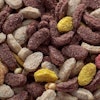

(1).png?auto=format%2Ccompress&fit=crop&h=167&q=70&w=250)
(1).png?auto=format%2Ccompress&fit=crop&h=167&q=70&w=250)
